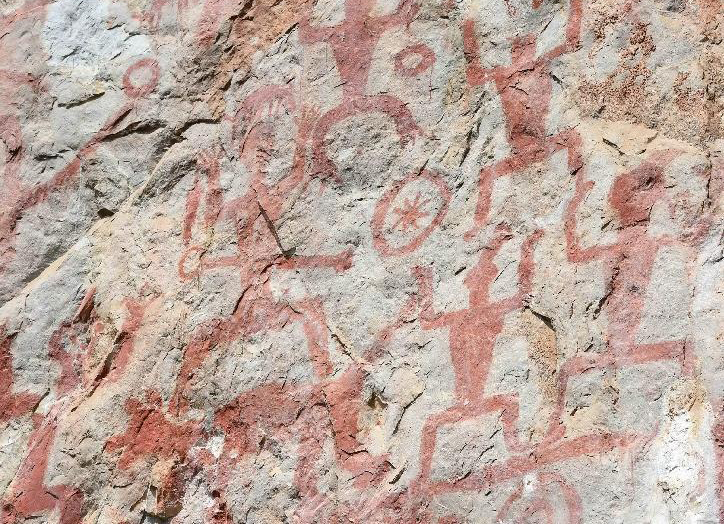Petroglyph protection in China adopts systematic approach

Huashan petroglyphs in Ningming County in the Guangxi Zhuang Autonomous Region are representative of petroglyphs in the southern part of China.
Research of petroglyphs in a real sense started in the 1980s in China. Before that, especially before the first half of the 20th century, most work in this field was merely recording. In the 1980s, based on cultural typology, pioneers in this field collected and analyzed these records, and identified three styles of Chinese petroglyphs according to the regions they are located, namely the petroglyphs in the northern part of China, petroglyphs in the southern part of China, and petroglyphs in the southeastern coastal areas.
In this way, it became a discipline with its own system, independent of archaeology. In the 21st century, domestic researchers began to realize the importance of field research, and are stressing learning and importing field research techniques and methods in this field.
Using means of field measuring and observing employed in archaeology as key methods, field research involves measuring, describing, recording and photographing petroglyphs, and also collecting, organizing, and storing related materials, in order to facilitate the management, research and educational functions of petroglyphs serving as public cultural resources.
In the last 30 years, the spreading of knowledge related to petroglyphs in China has made remarkable progress with more and more people learning about this cultural legacy. But at the same time, petroglyphs have been damaged at an even more rapid speed and to a larger degree. While people are becoming more aware of value of petroglyphs, damage to petroglyphs is also increasing.
Therefore, it is imperative to protect this cultural legacy. Nowadays, the biggest threat to petroglyphs comes from people. Because the closer the sites are to human habitation, the more severe the damage is to petroglyphs. Those listed as national intangible culture have not avoided being damaged. However, those sites that are far from human habitation or hard to find have basically managed to retain their original appearance, except for unavoidable natural damage.
More measures should be taken to protect petroglyphs. Two issues hinder the protection of petroglyphs. One is a lack of awareness to protect them as well as laws and regulations for protecting them. The other is inadequate protection and management techniques and methods.
Thus, laws and regulations should be further improved. Livelihoods of professionals involved in petroglyph protection should be given more attention. Professionals without adequate salaries are more likely to be attracted by economic benefits and seek economic results from petroglyphs.
The highest goal for petroglyph protection is to preserve their original conditions. The biggest value of petroglyphs is that they are reproductions of early civilizations; hence they help maintain knowledge of these civilizations. Due to changes caused by time and cultural integration, this method of reproducing human knowledge has been lost. The creators of petroglyphs have already passed away. Information embodied in petroglyphs became inextricable ciphers. In this sense, protecting and revealing information in petroglyphs is an act that allows us to reproduce and transmit memories about early civilizations.
Academics should recognize the importance of utilizing petroglyphs in a restrained way or leaving them untouched. Leaving sites and relics in their original places means keeping them unchanged and intangible. Authorities should also be in lock step with academics and make their own efforts in this regard.
On the other hand, research in this field should concentrate on enhancing the ability of copying and transmitting the knowledge carried by petroglyphs. It is one mission of petroglyph researchers and also a social requirement for them to help ensure the wisdom of early civilizations can be shared by as many people as possible.
Su Sheng is from the UNESCO International Rock-Art Committee.
